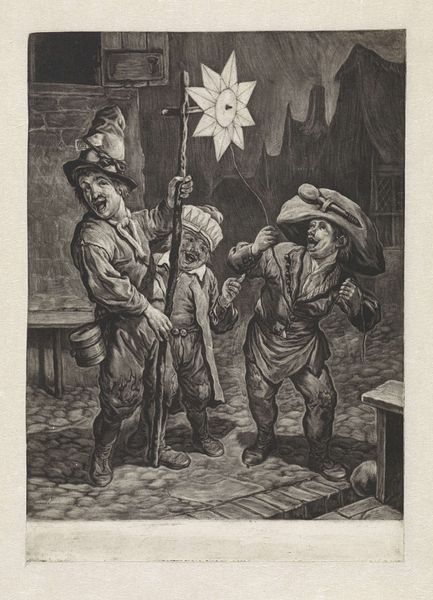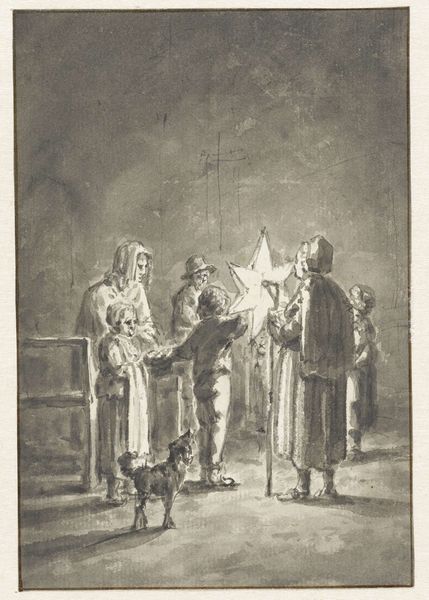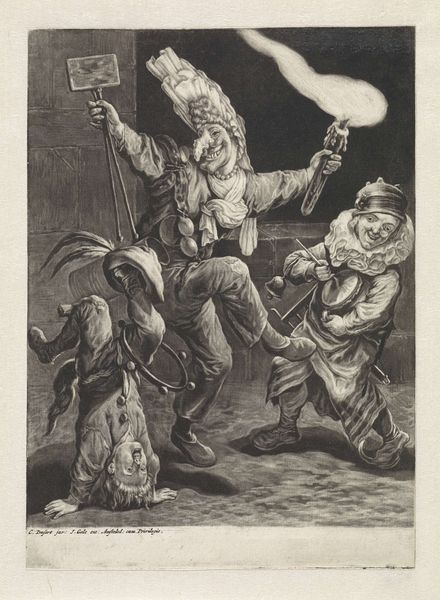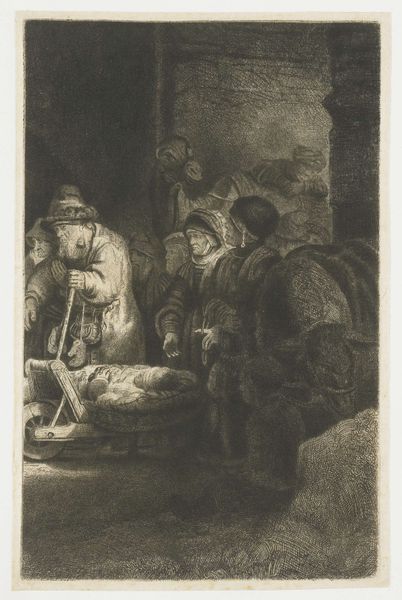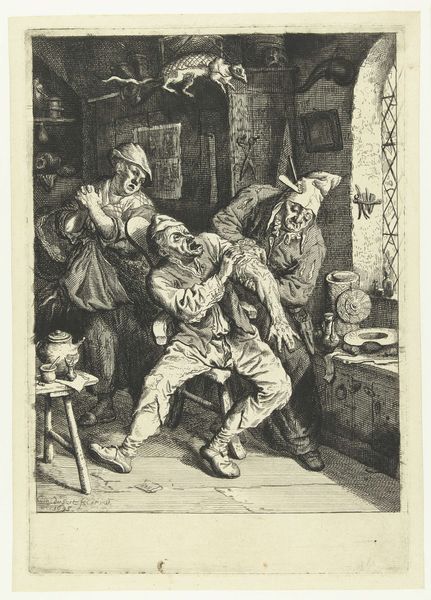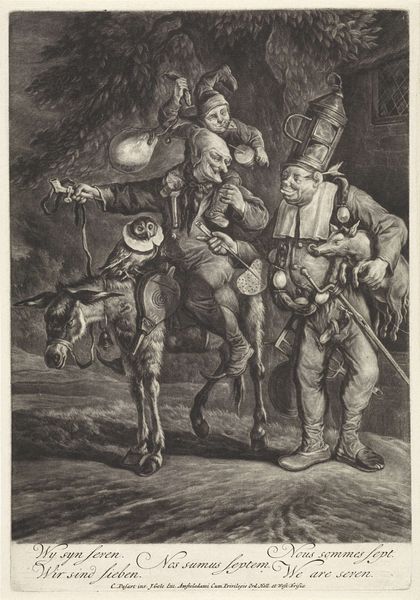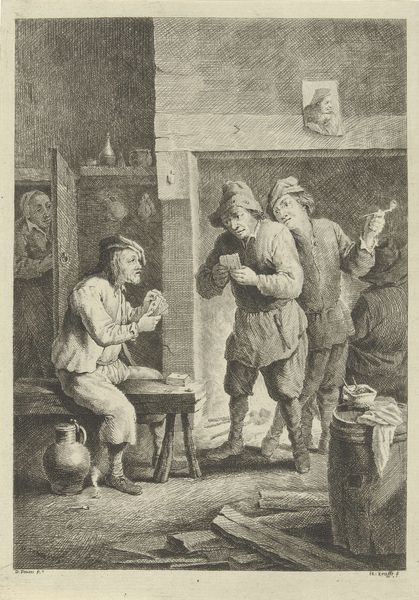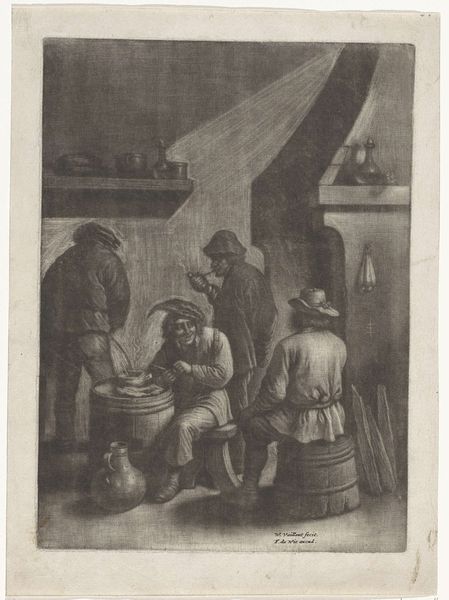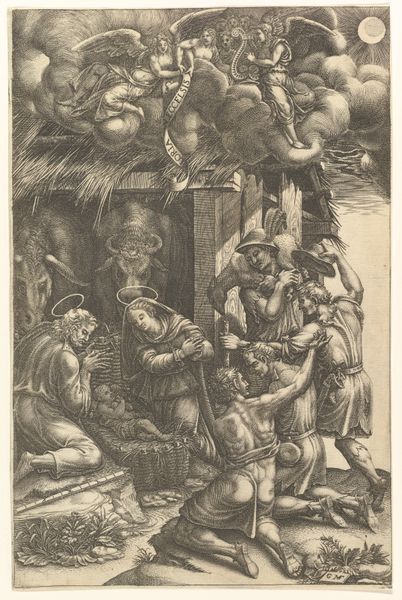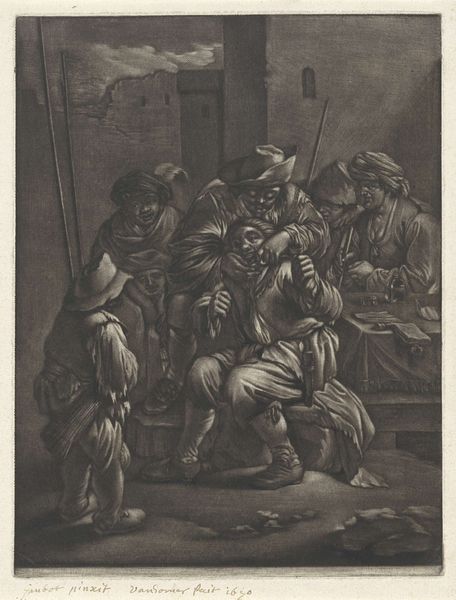
print, etching, engraving
#
dutch-golden-age
# print
#
etching
#
genre-painting
#
engraving
Dimensions: height 216 mm, width 154 mm
Copyright: Rijks Museum: Open Domain
Curator: I am struck by the carnivalesque energy in this image. The etching and engraving, made sometime between 1679 and 1704, presents us with an unruly group, a raucous procession almost bursting out of the frame. Editor: You've put it perfectly! It almost feels a little…chaotic. I can’t quite put my finger on it, but the rough, expressive lines, combined with the peculiar figures, give off a disquieting mood beneath the celebration. Curator: It’s by Cornelis Dusart, and is called "Januari," and is part of a series representing the months. Think about that, the turn of the new year as an unleashing. That star being carried – could that be a symbol for the Magi, of the star they followed at Epiphany in January? Editor: Or perhaps of some other, older pagan symbol adopted to new purposes! Looking closer at the people, there are such an assortment of hats! The tall floppy hats, with decorations on them... Is this image trying to imply some political commentary about social status by contrasting all these adornments with the ragged edges? Or something more lighthearted? Curator: Social commentary was certainly not unheard of! The image would definitely play into Dutch society at the time it was produced and would definitely take into account all the current social norms and behaviours. One can certainly make the case that hats represent status or affiliation, and how people identify with particular trends in dress or presentation as a whole. But remember, these were prints meant for a broader audience, for sale… Editor: Which brings it to the question: Did the artist intend such readings, or are we imbuing "Januari" with modern meanings, searching for layers that perhaps weren’t there, as he sought to depict one rowdy evening and make some income? Curator: Exactly! It speaks to how images accumulate meaning over time. What started as a commercial venture may transform into something imbued with the psychology, anthropology, and even the unconscious biases we carry with us as modern viewers. The ambiguity is potent. Editor: So, here we are at the Rijksmuseum, centuries later, grappling with how “Januari” challenges and delights us—not necessarily because we understand Dusart’s specific intent, but because we can discern our own realities mirrored in the work. Curator: Precisely, our interpretations reflect who we are now, and also gives life to "Januari", ensuring this old print continues to communicate and live in ways Cornelis Dusart probably never anticipated.
Comments
No comments
Be the first to comment and join the conversation on the ultimate creative platform.
